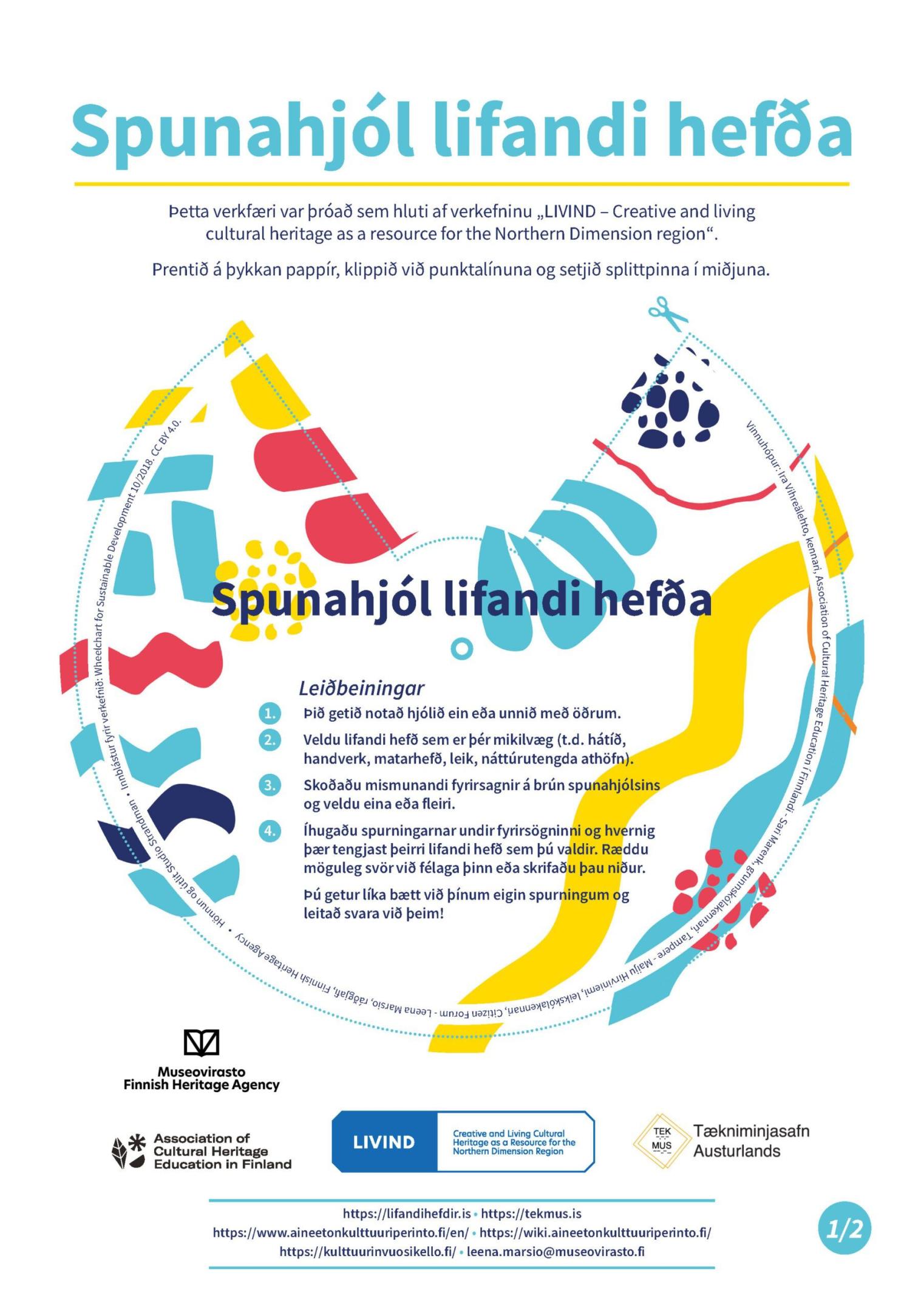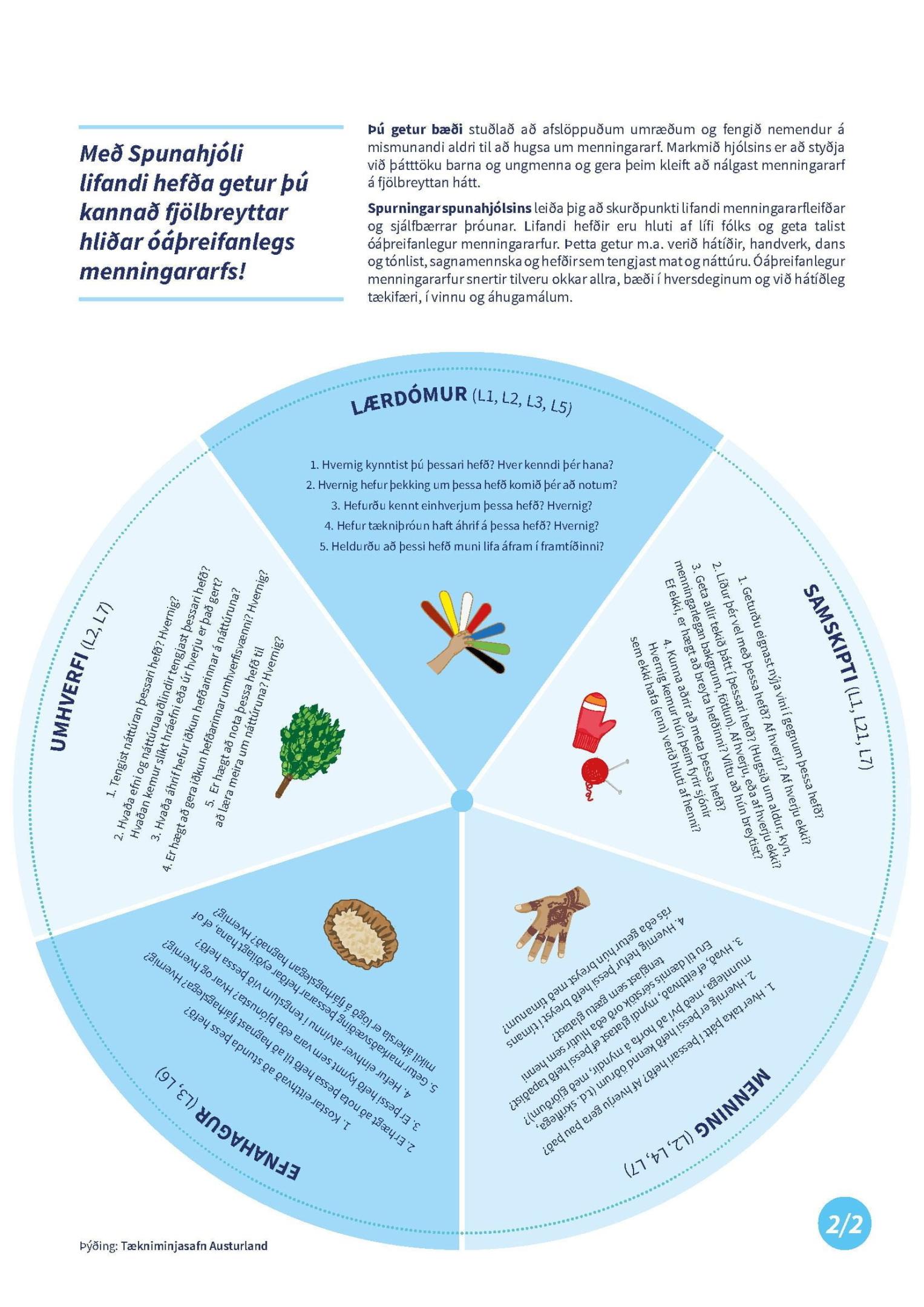Education
The spinning wheel of living traditions
A new educational resource for children that leads them to intangible cultural heritage
The Museum of Technological Heritage is part of a large international collaborative project called LIVIND, which is guided by the interface between intangible cultural heritage and sustainable development.
The latest product of that project is Spunahjöl living traditions.
The spinning wheel is intended for teachers, educators, instructors, interest groups and anyone interested in cultural heritage and its various connections with sustainable development. Using it opens up ways to look at these relationships and how our ways and traditions will change. The goal of the bike is to support the participation of children and young people and enable them to access cultural heritage in a fun and diverse way.
The spinning wheel questions lead you to the intersection of living cultural heritage and sustainable development. Living traditions are part of people’s lives, such as festivals, crafts, dance and music, storytelling and traditions related to food and nature. Intangible cultural heritage touches the existence of all of us, both in everyday life and on festive occasions, in work and hobbies.
By using the spinning wheel, you can promote relaxed discussions and get students of different ages to think about cultural heritage, its meaning for us and its value.
Spinning wheel of living traditions is a new tool that was developed as part of the project “LIVIND – Creative and living cultural heritage as a resource for the Northern Dimension region”. Austurland’s Museum of Technology translated the spinning wheel into Icelandic.
We would like to draw attention to the Living Traditions website, where you can get all kinds of ideas and information about different living traditions in Iceland.
Here you can access the spinning wheel for printing. It is best to print it on thick paper, then cut it out and fasten it together with a split pin in the middle. You can watch a short video in English that better explains its use here .


